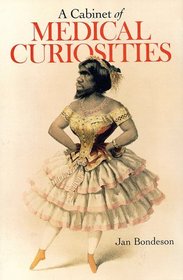Search -
A Cabinet of Medical Curiosities
A Cabinet of Medical Curiosities
Author:
Long ago, curiosities were arranged in cabinets for display: a dried mermaid might be next to a giant's shinbone, the skeletons of conjoined twins beside an Egyptian mummy. In ten essays, Jan Bondeson brings a physician's diagnostic skills to various unexpected, gruesome, and extraordinary aspects of the history of medicine: spontaneous human co... more »
Author:
Long ago, curiosities were arranged in cabinets for display: a dried mermaid might be next to a giant's shinbone, the skeletons of conjoined twins beside an Egyptian mummy. In ten essays, Jan Bondeson brings a physician's diagnostic skills to various unexpected, gruesome, and extraordinary aspects of the history of medicine: spontaneous human co... more »
ISBN-13: 9780801434310
ISBN-10: 0801434319
Publication Date: 11/1997
Pages: 250
Rating: 3
ISBN-10: 0801434319
Publication Date: 11/1997
Pages: 250
Rating: 3
4.3 stars, based on 3 ratings
Publisher: Cornell Univ Pr
Book Type: Hardcover
Other Versions: Paperback
Members Wishing: 4
Reviews: Amazon | Write a Review
Book Type: Hardcover
Other Versions: Paperback
Members Wishing: 4
Reviews: Amazon | Write a Review
Genres:
- Science & Math >> Mathematics >> History
- Medicine >> General
- Medicine >> Special Topics >> History




